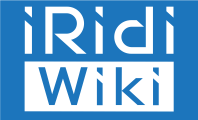This page is a
translated version of the page
Philips Dynalite and the translation is 100% complete.
iRidium for Philips Dynalite
A set of tools to create control interfaces for equipment by Philips Dynalite.
The documentation was updated on 31.3.2023
The driver is supported starting from 1.3.36. release version
Description
iRidium for Philips is a set of tools that allow to create an interface to control Philips Dynalite lighting equipment.
Tested with the following equipment:
- PDEG - Ethernet Gateway, it provides a multipurpose Ethernet connection to a Philips lighting control system. It provides bridging functionality between backbone and the DyNet fieldbus devices.
- DDBC1200 - Dimmer controller, a signal dimmer controller which supports protocols: 1–10 В, DSI, DALI and Broadcast DALI.
- DDRC420FR - 4 channel Relay Controller, a four channel relay controller for all types of switched loads up to 20 A inductive.
Connection
To connect the driver to equipment you must set up the gateway and download web-server beforehand. The gateway and other Philips Dynalite equipment can be set up in the Philips System Builder app for debugging. You can read more on the official website of the Signify company.
It is not recommended to use the driver in open networks.
If you are using a logical range for more than one gateway, the Get device state setting should always be False.
Without web-server scanner will not work.
Work in iRidium
Create a new project and add Philips Dynalite driver to it with the help of a scanner or entering data manually.
Scanning devices
During scanning iRidium Studio scans the bus and adds all Philips Dynalite devices with preset commands and feedback channels to iRidium project.
1 Click Scanner / Import > Philips Dynalite Scanner in the Devices tab in a created project:
2 Enter the IP-address of the gateway:
3 Add required devices to the project:
If the scanner can't find equipment, you can enter the driver settings manually:
Adding Driver Manually
Add Philips Dynalite driver to your project from iRidium database:
1 Open the Devices panel in the created project and add Philips Dynalite driver to it with the help of Add driver:
2 Enter the driver connection settings:
- Log Level - the level of logging;
- Host - IP-address of the gateway;
- Keep Alive - interval to check TCP connection. If there is no answer to Keep Alive request, the driver will be forced to the turned off state;
- Get device state - getting device state (true, false);
- Update Time (ms) - the frequency of sending requests;
- Update interval time (ms) - interval between requests;
- Driver Version - version (parameter is always 1).
3 Click left mouse button on the added Philips Dynalite driver (Add subdevice) and add the required amount of devices (Area):
4 Set up the connection settings for the devices according to their settings in the Philips System Builder app:
- Name - the name of a device,
- Driver Type - a type of the driver (Philips Dynalite),
- Device type - a type of a device (Area),
- Area ID - unique ID of a device (in the Philips System Bilder app).
Setting Commands and Feedback Channels
Add the required number of commands and feedback channels to devices and set them up:
Command
| Parameter |
Values |
Description
|
| Name |
"Command" |
the name of a command.
|
| Type |
Channel,
Preset |
the comamnd type.
|
| ID |
0-n |
unique ID of a command
(it is created in the Philips System Bilder app).
|
| Fade (ms) |
200-n |
a time (delay) the channel will take to change its value
from the initial to the set one (at least 200).
|
| Value* |
0-100,
1-170 |
Channel,
Preset
|
*Value - indicate when dragging the command on graphic items
Feedback
| Parameter |
Values |
Description
|
| Name |
"Feedback" |
the name of a feedback channel
|
| Type |
Channel,
Preset |
type of a command
|
| ID |
0-n |
unique ID of a feedback channel
(it is created in the Philips System Bilder app).
|
| Value* |
0-100,
1-170 |
Channel,
Preset
|
* Value - a value that comes from equipment
To control equipment it is required to set commands (Commands) and feedback channels (Feedbacks). To send a command, drag'n'drop it on a graphic item and enter a value to send. To display feedback drag'n'drop a feedback channel on a graphic item and choose how to output or display a value.
Read more about work with graphic items in the
"Types of graphic items" article.

